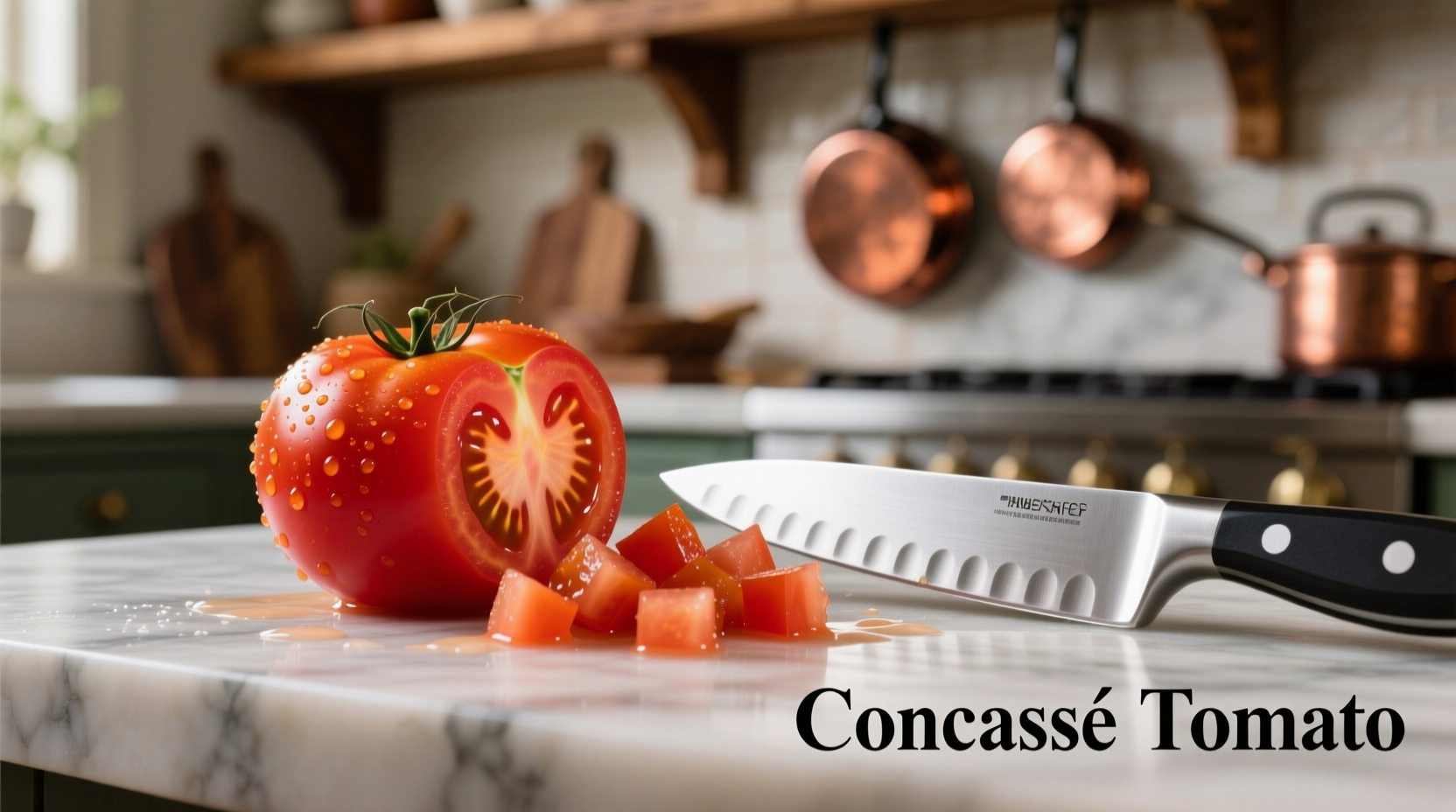Concasse tomato refers to tomatoes that have been peeled, seeded, and diced—a French culinary technique creating uniform pieces without skin or seeds for sauces, salsas, and dishes where texture matters. Master this professional method in under 5 minutes to eliminate bitter skins and excess moisture that ruin sauces, soups, and salads.
Ever wonder why restaurant tomato sauces taste cleaner and richer than your homemade versions? The secret often lies in concasse—a precise French preparation method that transforms ordinary tomatoes into chef-quality ingredients. Unlike regular diced tomatoes, concassé tomatoes remove both skin and seeds, delivering pure tomato flesh with consistent texture and intensified flavor.
What Exactly Is Tomato Concasse?
The term concasser comes from French, meaning "to chop" or "to mince." In culinary practice, tomato concasse specifically describes tomatoes that have undergone three critical steps: blanching for easy peeling, seeding to remove watery pulp, and uniform dicing. This technique appears in classic French cookbooks like Mastering the Art of French Cooking by Julia Child and is standard practice in professional kitchens worldwide.
| Preparation Method | Skin Status | Seeds Included | Best For |
|---|---|---|---|
| Concasse | Removed | Removed | Sauces, refined soups, bruschetta |
| Regular Diced | Intact | Intact | Stews, chili, rustic dishes |
| Crushed | Intact | Intact | Pizza sauce, hearty pasta sauces |
Why Bother With Concasse? 3 Key Benefits
Professional chefs consistently choose concasse over simpler methods for compelling reasons:
- Texture perfection—Skin contains tough fibers that remain chewy even after cooking, while seeds add unwanted moisture that dilutes flavors
- Flavor concentration—Removing water-rich seeds intensifies tomato taste by up to 30% according to culinary research from Le Cordon Bleu
- Visual appeal—Uniform pieces create professional presentation in dishes where appearance matters
Your Concasse Toolkit: 4 Essential Items
You don't need specialized equipment—just these kitchen staples:
- Sharp paring knife (preferably 3-4 inches)
- Small serrated tomato knife (optional but helpful)
- Metal spoon for seeding
- Ice water bath container
Step-by-Step: Perfect Concasse Technique
Follow these professional steps for flawless results every time:
- Score and Blanch: Make shallow "X" on tomato bottom. Submerge in boiling water for 15-30 seconds until skin peels back
- Shock in Ice Bath: Transfer immediately to ice water for 30 seconds to stop cooking and loosen skin
- Peel Skin: Starting at the "X," gently pull skin away using your fingers—should come off easily
- Seed Removal: Cut tomato in half horizontally. Gently squeeze each half over bowl to release seeds, then scrape remaining seeds with spoon
- Dice Uniformly: Cut into ¼-inch cubes for sauces or ½-inch for salads using consistent strokes

When Concasse Matters Most: Context Boundaries
Not every tomato dish requires concasse. Understanding these context boundaries prevents unnecessary work:
- Use concasse for: Tomato sauces (marinara, arrabbiata), refined soups (gazpacho, tomato bisque), bruschetta, and any dish where texture purity matters
- Skip concasse for: Hearty stews, chili, roasted tomato dishes, or recipes specifically calling for "diced tomatoes with juice"
- Seasonal consideration: Summer-ripened tomatoes benefit most from concasse as they contain more seeds and thinner skins than winter varieties
Pro Tips to Avoid Common Mistakes
Even experienced home cooks make these errors:
- Over-blanching: More than 30 seconds makes tomatoes too soft—peel should release with light pressure
- Inconsistent dicing: Varying sizes cause uneven cooking—use guide lines on cutting board
- Wasting tomato water: Save the strained tomato liquid for sauces—it contains valuable flavor compounds
- Using dull knives: Causes crushing instead of clean cuts—sharpen before starting
Storage Secrets for Maximum Freshness
Properly stored concassé tomatoes maintain quality for meal prep:
- Refrigerate in airtight container for up to 3 days
- Place paper towel on surface to absorb excess moisture
- Freeze in ice cube trays for sauce bases (keeps 6 months)
- Never store at room temperature—accelerates spoilage
Real Kitchen Applications
Put your concassé tomatoes to work in these chef-recommended dishes:
- Creamy tomato basil soup: Eliminates grainy texture from seeds
- Fresh salsa: Prevents watery consistency that separates
- Shakshuka: Creates clean tomato base that doesn't overpower eggs
- Tomato tartare: Essential for refined presentation and texture











 浙公网安备
33010002000092号
浙公网安备
33010002000092号 浙B2-20120091-4
浙B2-20120091-4